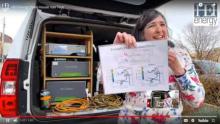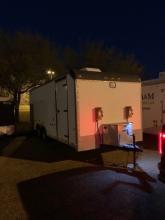Quarterly Update September 2022
Learn more about ongoing research funded by HEI Energy examining community exposures associated with unconventional oil and gas development.
To keep you informed, HEI Energy is now making available Quarterly Research Updates about progress on our currently funded research.
Click on the links below for details about each of our five studies.
Updates can also be found on each research team's page.
Project Updates
Air Quality and Noise Research
Measuring and Modeling Air Pollution and Noise Exposure Near Unconventional Oil and Gas Development in Colorado
Read the full Research Report here
The goal of this study is to develop community exposure profiles in the Colorado North Front Range for chemicals in the air as well as noise over the UOGD lifecycle, from site preparation through production of multi-well pads. This study will assess potential exposure pathways connecting UOGD chemical emissions to nearby communities and use the results to better understand the public health implications. The investigators will apply the following methods to achieve these goals:
- Use a combination of existing air quality data, innovative air quality measurements, and source apportionment models to quantify potential exposures.
- Collect noise measurements from UOGD operations to quantify potential exposures.
- In collaboration with the Hildebrandt Ruiz team, develop the "TRAcking Community Exposures and Releases" (TRACER) model for use in the Denver-Julesburg region to predict chemical emissions from specific UOGD processes. The teams will combine the predicted emissions with an air quality model to estimate concentrations of chemicals in the air.
- Evaluate model performance by comparing air quality monitoring data collected by this and the Franklin team with model predictions in the Denver-Julesburg region.
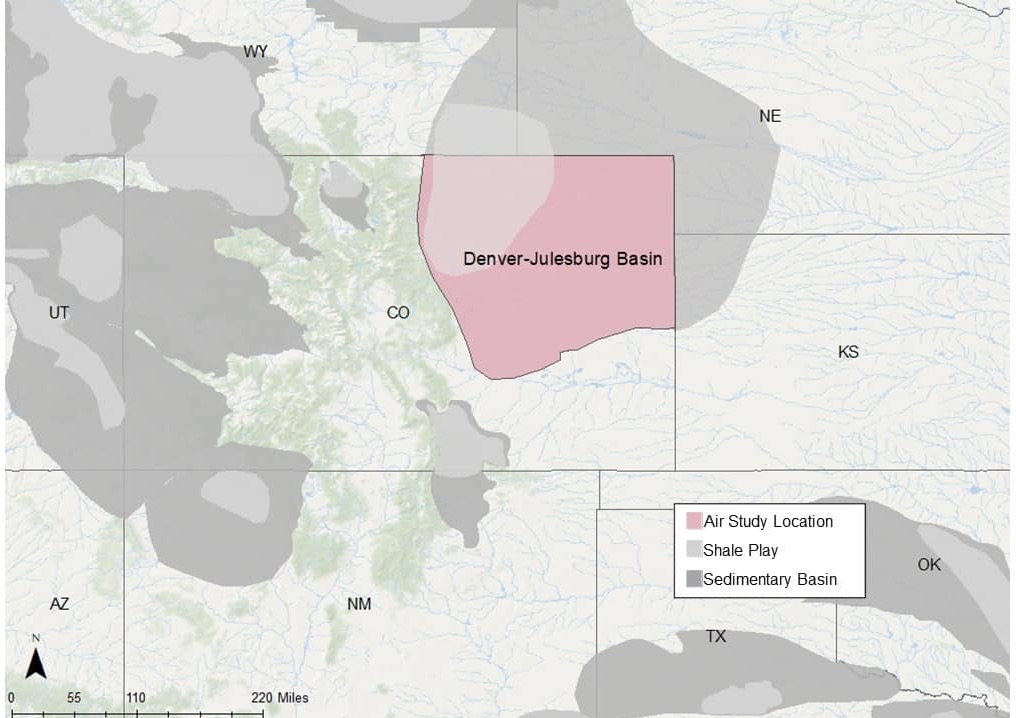
What's Happened
- Procured noise and air quality monitoring equipment.
- Conducted a project kickoff open house, drawing local community members, government officials, and industry representatives.
- Identified initial well pads for noise and air quality monitoring near Longmont and Aurora, Colorado.
- Analyzed past air quality monitoring data to identify chemical signatures of various UOGD operations.
- Presented study design to Colorado Oil and Gas Conservation Commission. Check out the presentation, here.
What's New
- Testing new noise and air quality monitoring equipment for upcoming field deployment.
- Securing permissions for siting monitoring equipment during initial field deployment.
- Collaborating with the UT Austin team to develop the TRACER model.
What's Next
- Deploy noise and air quality monitoring equipment during drilling operations at a UOGD well pad near Aurora, CO.
- Develop the TRACER model to represent emissions during UOGD drilling.
- Continue engagement with public and local government stakeholders near Aurora, CO well pad.
Assessing Source Contributions to Air Quality and Noise in Unconventional Oil Shale Plays
Read the full Research Report here
The goal of this study is to understand potential community exposure to UOGD-associated chemicals and radioactivity in air as well as noise. The investigators will apply the following methods to achieve their goals:
- Monitor air quality and noise in the Permian region of New Mexico and the Eagle Ford region of Texas to understand how potential exposures vary across the regions and over different time scales.
- Combine existing air monitoring data in the Denver-Julesburg region of Colorado and original data collected in the Permian and Eagle Ford regions with statistical models to distinguish UOGD from other sources of chemicals in the air and noise sources.
- Leverage satellite data to examine the association between natural gas flaring and air quality.
Collaborate with the Collett and Hildebrandt Ruiz teams to evaluate the "TRAcking Community Exposures and Releases" (TRACER) model performance in the Denver-Julesburg and Eagle Ford regions.
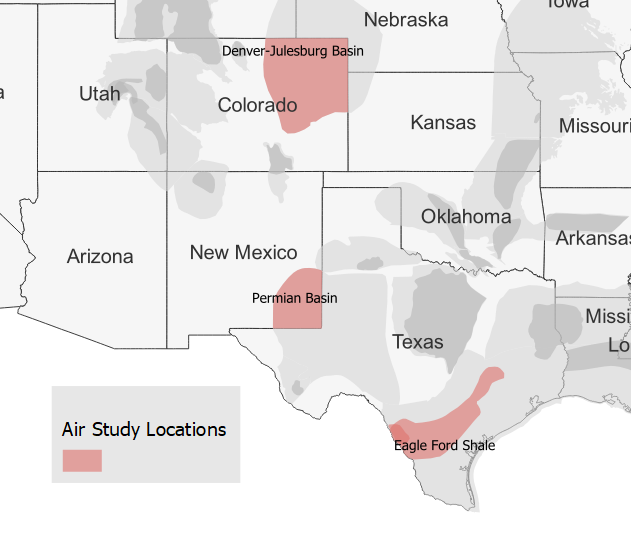
What's Happened
- Engaged with the community and local stakeholders in the Permian Basin to bring awareness to the project through in-person meetings and a series of virtual open houses.
- Acquired trailer for air and noise monitoring in the Permian Basin.
- Collected satellite data to detect flares and air quality data from the Texas Commission on Environmental Quality.
What's New
- Outfitting trailer with air, noise, and radiation monitoring equipment.
- Engaging with community members in the Permian Basin to establish a location for the air, noise, and radiation monitoring trailer.
What's Next
- Acquire passive sampling equipment that measures UOGDrelated chemicals in air.
- Hold a community meeting to recruit volunteers to place passive sampling equipment on their properties.
- Begin collecting and analyzing data from the monitoring trailer.
Predictive, Source-oriented Modeling and Measurements to Evaluate Community Exposures to Air Pollutants and Noise from Unconventional Oil and Gas Development
The goal of this study is to develop a broadly applicable model, the "TRAcking Community Exposures and Releases" (TRACER) model. The model will assess potential community exposures to chemicals in the air from UOGD and inform future health studies. The model will then be used to predict the magnitude and frequency of emissions from individual UOGD sources, and when coupled with dispersion modeling, will generate concentrations of chemicals in the air. The investigators will apply the following methods to achieve their goals:
- Collect stationary and mobile air quality and noise measurements in the Eagle Ford, Texas region.
- In collaboration with the Collett team, develop the TRACER model in the Eagle Ford region to generate chemical emissions data from specific UOGD processes. The teams will combine the predicted emissions with air quality models to estimate local and regional concentrations of chemicals in the air.
- Expansion of the TRACER model to the Marcellus region, leveraging data from the separately funded Appalachian Methane Initiative.
- Evaluate model performance by comparing air quality monitoring data with model predictions in the Eagle Ford region.
- Use TRACER model results to assess spatial and temporal variability of potential community exposures to UOGD-associated chemicals and evaluate the effects of different UOGD sources on potential community exposures.
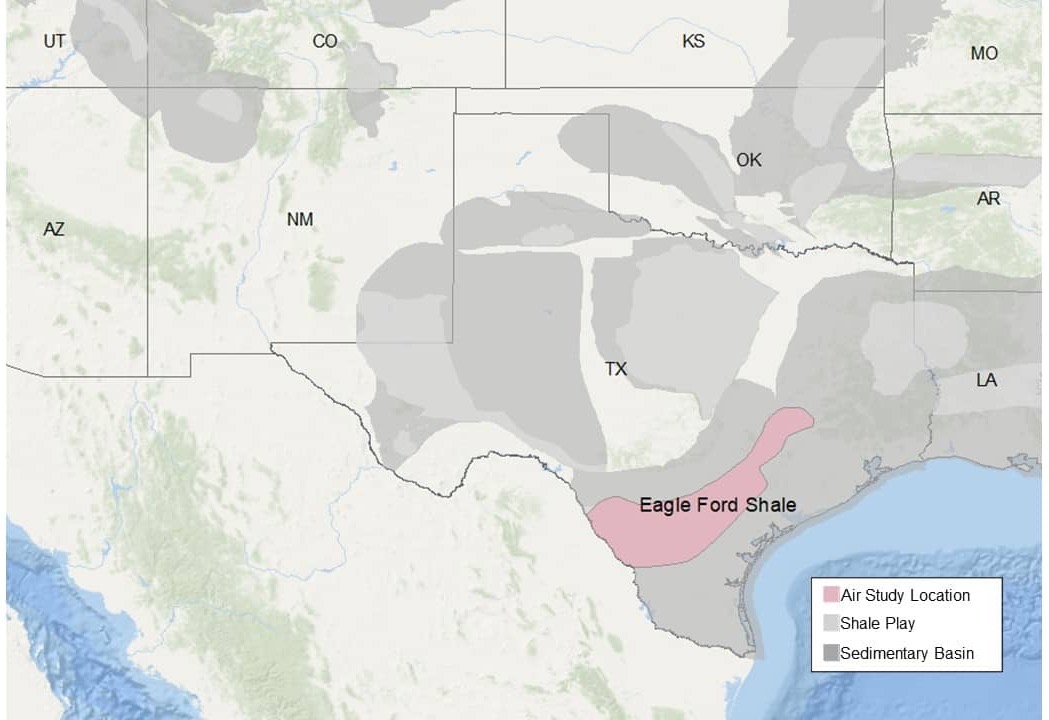
What's Happened
• Purchased and received equipment to monitor air quality and noise.
• Started to develop the TRACER model to predict emissions of chemicals of potential concern for health.
What's New
- Identifying air and noise monitoring locations based on the presence of emissions sources, wind direction and accessibility in Karnes City, Texas.
- Setting up monitoring platforms and testing equipment.
What's Next
- Begin mobile air monitoring in October 2022 in Austin, Texas, to 'test drive' the equipment for future monitoring in the Eagle Ford Shale.
- Use the TRACER model to evaluate the effect of proposed Environmental Protection Agency rules, aimed at reducing methane emissions, on volatile organic compound emissions from UOGD.
- Develop techniques to include emissions from flares in the TRACER model.
Water Quality Research
Using Geoscientific Analysis and Community Engagement to Analyze Exposures to Potential Groundwater Contamination
Read the full Research Report here
The overall goal of this study is to evaluate potential linkages between unconventional oil and gas development (UOGD) and groundwater contamination in a tri-county region of Pennsylvania with many overlapping potential sources of contamination. The analysis will be informed by focus groups in the region to help identify areas of community concern. The team plans to produce a broadly applicable framework to study the relationship between specific UOGD processes and potential groundwater contamination. The investigators will apply the following methods to achieve their goals:
- Combine an existing data set of chemical measurements in groundwater with machine learning to isolate the influences of natural and anthropogenic processes on groundwater chemistry and to identify chemical signatures of UOGD.
- Evaluate linkages between UOGD and potential water contamination.
- Develop an approach to map locations of potential contamination from UOGD activities for application to future investigations of potential human exposures and health effects associated with UOGD.
- Collected and analyzed well water samples well water in “hot spots” identified through their analysis as likely locations of wastewater spills, in order to evaluate the team’s approach.
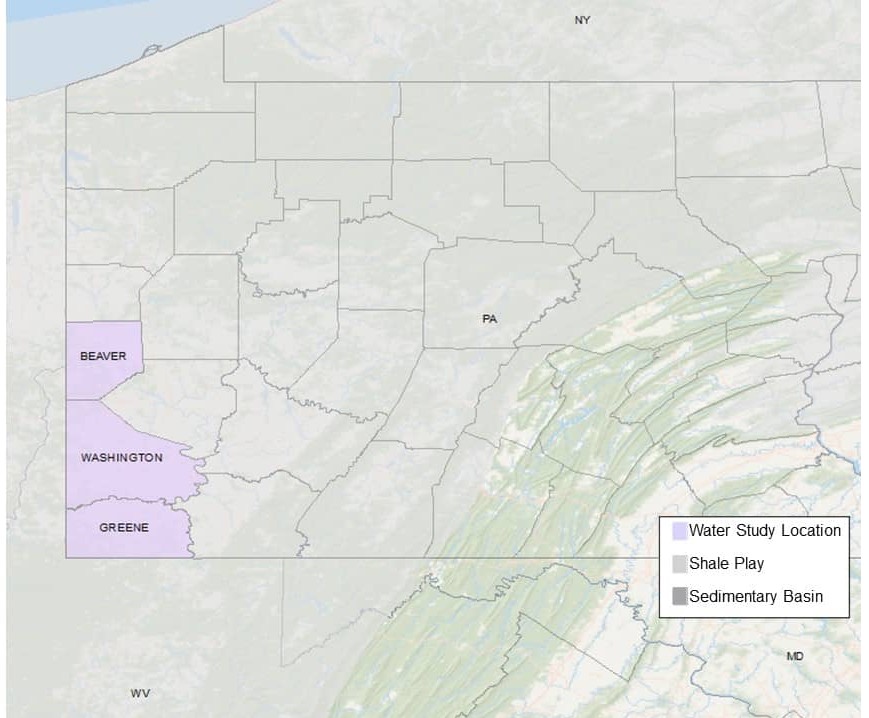
What's Happened
- Transcribed part of a water quality data set from the Pennsylvania Department of Environmental Protection and inputted 479,382 measurements from 5,806 water sampling sites into the Shale Network database. As of June 2022, the Shale Network database contains 2,035,761 water quality measurements from 59,191 sampling sites.
- Published the work of research team members: Geochemical Evidence of Potential Groundwater Contamination with Human Health Risks Where Hydraulic Fracturing Overlaps with Extensive Legacy Hydrocarbon Extraction.
What's New
- Analyzing data from focus groups of community members obtained in the summer of 2022 to learn about their concerns.
- Continuing analysis of the water quality dataset.
- Beginning synthesis of focus group data and water quality data.
- Continuing to investigate mathematical tools that could isolate the impacts on water quality from UOGD and other types of energy development.
What's Next
- Complete preliminary analysis of water quality data.
- Host follow-up community focus groups to review the analysis of water quality data.
- Use community feedback from the May 2022 Shale Network Workshop to prepare for the 2023 workshop.
Upcoming Events
May 2023
Penn State Shale Network Workshop, Registration link coming soon
Assessing the Effects of Unconventional Oil and Gas Development on Community Water Sources
The study is complete and now undergoing peer review and an independent quality assurance/quality control audit before HEI Energy releases the research report in the first part of 2026.
The goal of this study is to evaluate whether instances of community water supply contamination in Colorado and New Mexico might be the result of unconventional oil and gas development (UOGD). The study will be useful for understanding the UOGD operational conditions that might present a risk to community water supplies. The investigators will apply the following methods to achieve their goals:
- Analyze existing groundwater and surface water quality data for community water supplies near UOGD and examine correlations between water quality and oil and gas operational data.
- Examine temporal and spatial correlations between UOGD and community water supply contamination to identify possible exposure pathways.
- Model contaminant transport along possible exposure pathways to evaluate the feasibility of the pathways connecting community water supplies with UOGD.
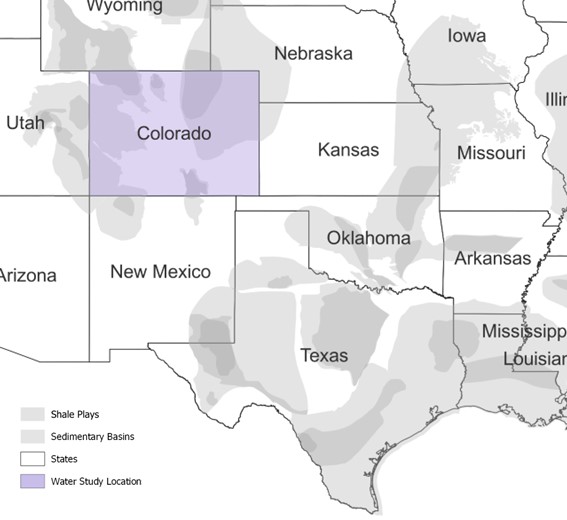
What's Happened
- Analyzed water quality data and oil and gas operations records to identify case studies involving water supply contamination by benzene, toluene, ethylbenzene, and xylenes (BTEX) in Colorado.
- Examined the water quality data to identify whether concentrations of other chemicals exceed drinking water standards. This information will be used to help determine the source of BTEX detected in community water supplies.
What's New
- Exploring the water quality data and oil and gas operations records to identify potential cases of release and transport of chemicals from oil and gas facilities to community water supplies.
What's Next
- Use the cases to inform in-depth chemical transport pathway modeling.
- Use the cases to estimate the health risk associated with community exposure to chemicals detected in community water supplies.


